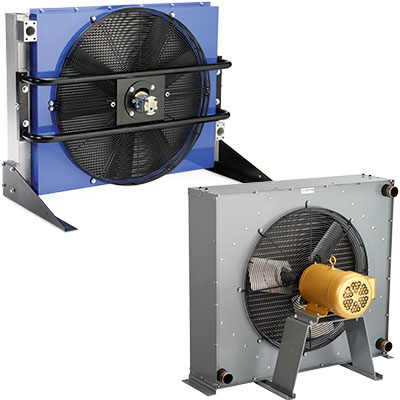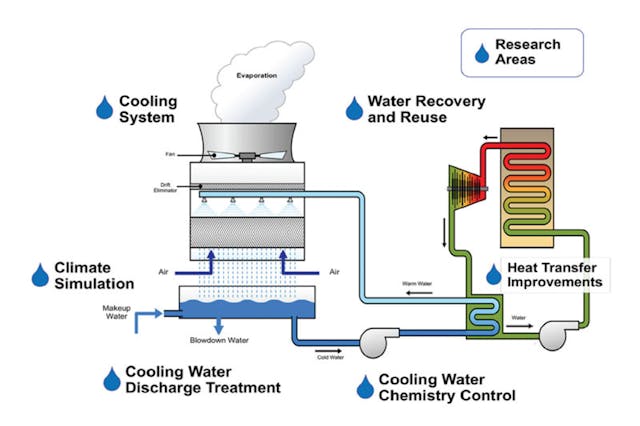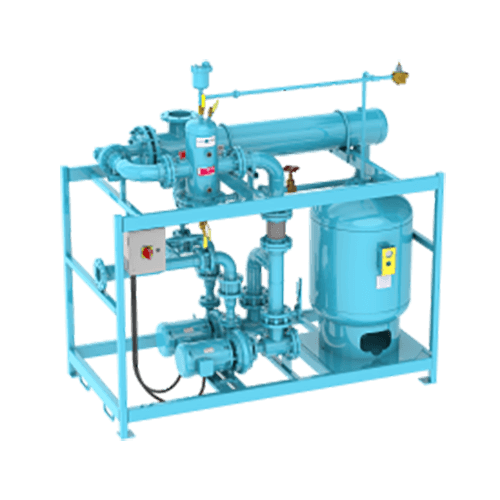The Role of Heat Transfer Solutions in Sustainable Energy Solutions for the Future
Heat transfer systems are crucial in the pursuit for sustainable power options. They optimize thermal power monitoring, improving the efficiency of eco-friendly innovations. By using mechanisms like conduction, convection, and radiation, these systems reduce energy losses. Their duty in solar thermal and geothermal applications is particularly substantial. As innovations arise, the capacity for more improvements raises vital inquiries concerning future energy strategies. What growths will shape the landscape of sustainable power?
Understanding Heat Transfer Equipments

The Importance of Thermal Power Administration
Effective thermal power administration is crucial for optimizing energy effectiveness and lessening waste in numerous systems. By managing temperature level and optimizing Heat transfer processes, companies can markedly minimize power consumption and operational expenses. Reliable management includes the implementation of innovative modern technologies and methods that keep an eye on and regulate thermal conditions within systems, making sure that power sources are made use of successfully. On top of that, proper thermal power monitoring adds to reducing greenhouse gas exhausts, lining up with international sustainability objectives. It additionally enhances system integrity and efficiency, leading to improved product high quality and longer devices life-span. Ultimately, prioritizing thermal energy administration is a crucial action in the direction of developing a lot more sustainable power services and promoting a responsible strategy to energy intake in industrial and residential contexts.
Applications of Heat Transfer in Renewable Resource
While various renewable energy sources promise sustainability, the reliable application of Heat transfer plays a crucial function in their efficiency. In wind power systems, Heat transfer is used for generator part cooling, enhancing performance and durability. Geothermal energy relies upon reliable Heat exchange between the planet's subsurface and the liquid flowing in the system, taking full advantage of energy removal. Biomass energy procedures also take advantage of Heat transfer, as it helps in converting organic materials right into functional fuel with pyrolysis and gasification. Additionally, in hydropower, keeping suitable temperatures in reservoirs can improve energy result. Each of these applications demonstrates the important value of Heat transfer systems in enhancing renewable power innovations, inevitably contributing to a much more lasting energy future.
Enhancing Solar Thermal Power Efficiency
As solar thermal power systems remain to evolve, enhancing their efficiency has actually come to be necessary for making best use of power outcome. Developments in Heat transfer modern technologies, such as enhanced thermal storage space products and innovative Heat exchangers, play a substantial role in improving performance. By utilizing innovative products that have remarkable thermal conductivity, systems can record and move Heat better. Furthermore, integrating radar that follow the sun's path assurances that collection agencies obtain ideal solar exposure throughout the day. Utilizing nanotechnology in solar absorbers can additionally increase energy absorption rates. Including computerized control systems assists regulate temperature levels and take care of energy distribution efficiently, leading to lowered losses and boosted total system effectiveness. These improvements lead the way for more lasting solar thermal energy services in the future.
Geothermal Heating: A Sustainable Solution
Geothermal heating presents a viable option for lasting power, using substantial environmental advantages through minimized greenhouse gas exhausts. Its effectiveness and cost-effectiveness make it an eye-catching alternative to traditional heater. Nevertheless, challenges associated with application must be resolved to optimize its potential influence.
Ecological Benefits of Geothermal
Conventional heating approaches contribute significantly to greenhouse gas exhausts, geothermal home heating provides an engaging alternative that lessens ecological influence. By taking advantage of the Earth's internal Heat, geothermal systems make use of a renewable energy resource, significantly reducing reliance on nonrenewable fuel sources. This approach produces very little carbon exhausts, making it a cleaner choice for commercial and household heating. Additionally, geothermal systems advertise energy efficiency, as they call for less power contrasted to traditional furnace. DVS Heat Transfer Systems. The usage of geothermal energy likewise aids in minimizing air contamination, boosting local air top quality and public wellness. As a lasting solution, geothermal heating supports climate modification reduction initiatives, placing itself as an important element in the change in the direction of a greener future
Efficiency and Cost-Effectiveness
How does geothermal heating measure up in regards to effectiveness and cost-effectiveness contrasted to standard heating unit? Geothermal heating demonstrates exceptional effectiveness, typically accomplishing a coefficient of performance (COP) of 3 to 5, meaning it generates 3 to 5 systems of Heat for every device of power eaten. This performance converts into lower operating costs, especially in areas with steady geothermal sources. First setup costs can be more than standard systems; however, lasting cost savings on power bills and lowered maintenance expenditures can counter these ahead of time financial investments. In addition, lots of federal governments incentivize geothermal systems with refunds and tax credit histories, enhancing their cost-effectiveness. On the whole, geothermal home heating becomes a economically sensible and sustainable option to even more traditional heating remedies.
Implementation Challenges and Solutions
Various difficulties can restrain the widespread implementation of geothermal furnace, despite their clear advantages as a sustainable power solution. High initial installment expenses usually prevent house owners and investors, making financing a substantial barrier. Furthermore, the geographical limitations of appropriate geothermal websites restrict access in specific regions. Neighborhood regulations and allowing procedures click here for more can also make complex project advancement, causing hold-ups. Furthermore, public recognition and understanding of geothermal systems remain reduced, preventing approval. To resolve these difficulties, targeted education projects can enhance public knowledge, while government incentives can alleviate economic burdens. Working together with regional authorities to streamline laws might assist in smoother task approvals, eventually promoting the fostering of geothermal heating as a feasible, lasting power choice.
Innovations in Heat Transfer Technologies
Innovations in Heat transfer innovations play an essential function in boosting power effectiveness and sustainability. Advanced Heat exchangers and stage adjustment materials are at the forefront of these developments, supplying considerable enhancements in thermal monitoring. These technologies not just maximize energy usage but likewise add to minimizing environmental impact in various applications.
Advanced Heat Exchangers
Advanced Heat exchangers play a necessary function in improving power effectiveness throughout numerous applications in lasting power solutions. These gadgets promote the transfer of Heat in between two or more liquids, considerably minimizing power consumption in processes such as industrial heating, cooling, and power generation. Innovations in products and design, such as using nanofluids and portable arrangements, have actually led to boosted thermal efficiency and minimized dimension needs. Furthermore, innovations in digital tracking and control systems enable maximized operation, additional enhancing efficiency. By reducing waste Heat and maximizing energy recovery, advanced Heat exchangers add to lower carbon footprints and sustain the shift towards ecologically pleasant innovations. Their continued growth is crucial for achieving global energy sustainability goals.
Stage Modification Materials
The assimilation of phase change products (PCMs) into Heat transfer technologies represents a substantial advancement in energy administration and effectiveness. PCMs soak up and release thermal energy during their phase changes, making it possible for reliable temperature level law in structure products and energy systems. By storing excess Heat throughout top periods and launching recommended you read it when demand increases, PCMs add to pack shifting and energy preservation - DVS Heat Transfer Systems. This ability enhances the performance of renewable power systems, specifically in solar thermal applications. In addition, PCMs can enhance the thermal convenience of interior settings, decreasing dependence on conventional heating and cooling methods. As technologies in PCM formulas continue to arise, their function in lasting energy options is poised to grow, providing encouraging methods for future research and application

Future Prospects for Heat Transfer in Lasting Power
As the need for sustainable energy services remains to rise, the function of Heat transfer systems is becoming increasingly critical fit future technologies. Innovations in products and designs are anticipated to enhance effectiveness in Heat transfer, lowering energy losses in various applications. The combination of advanced thermal storage systems, such as phase change products and thermochemical storage space, will allow much better monitoring of power resources. Research into nanofluids and biomimetic Heat exchangers might even more optimize thermal performance. The adoption of smart technologies will certainly enable for real-time tracking and adaptive control of Heat transfer processes. These advancements are poised to considerably add to the general effectiveness and sustainability of energy systems, leading the way for a much more energy-efficient future.
Regularly Asked Inquiries
Just How Can Individuals Execute Heat Transfer Equipment in the house?

Individuals can implement Heat transfer systems at home by mounting energy-efficient home appliances, utilizing radiant heating, and optimizing insulation. These measures boost power efficiency, minimize prices, and promote lasting practices in property atmospheres.

What Are the Expenses Related To Installing Heat Transfer Equipments?
The expenses connected with setting up Heat transfer systems vary extensively, normally including equipment, installment labor, and maintenance. Variables such as system kind, home size, and regional policies significantly influence the total expenditure included.
Exist Government Incentives for Heat Transfer System Installations?
Federal government incentives for Heat transfer system setups differ by area and can consist of tax obligation grants, rebates, and credit reports. These economic benefits intend to urge fostering, eventually promoting power effectiveness and reducing environmental influence within communities.
Just How Do Heat Transfer Equipments Impact Energy Expenses?
Heat transfer systems significantly influence energy bills by optimizing energy effectiveness. By improving the transfer of Heat, these systems minimize power usage, leading to reduced utility expenses and developing a more sustainable approach to energy monitoring.
What Upkeep Is Required for Heat Transfer Solutions?
Maintenance for Heat transfer systems consists of regular assessments, cleansing of components, inspecting liquid levels, guaranteeing correct insulation, and replacing worn components. These jobs aid maintain effectiveness, stop malfunctions, and extend the system's functional life expectancy.
These systems assist in find out here now the activity of thermal energy from one medium to an additional, enabling the transfer of Heat for air conditioning, home heating, or power generation functions. Geothermal energy depends on efficient Heat exchange between the earth's subsurface and the fluid circulating in the system, making the most of energy extraction. In addition, geothermal systems advertise power performance, as they require much less energy contrasted to conventional home heating systems. Advanced Heat exchangers play a vital duty in enhancing power performance across various applications in lasting energy services. Heat transfer systems especially influence power costs by enhancing power efficiency.